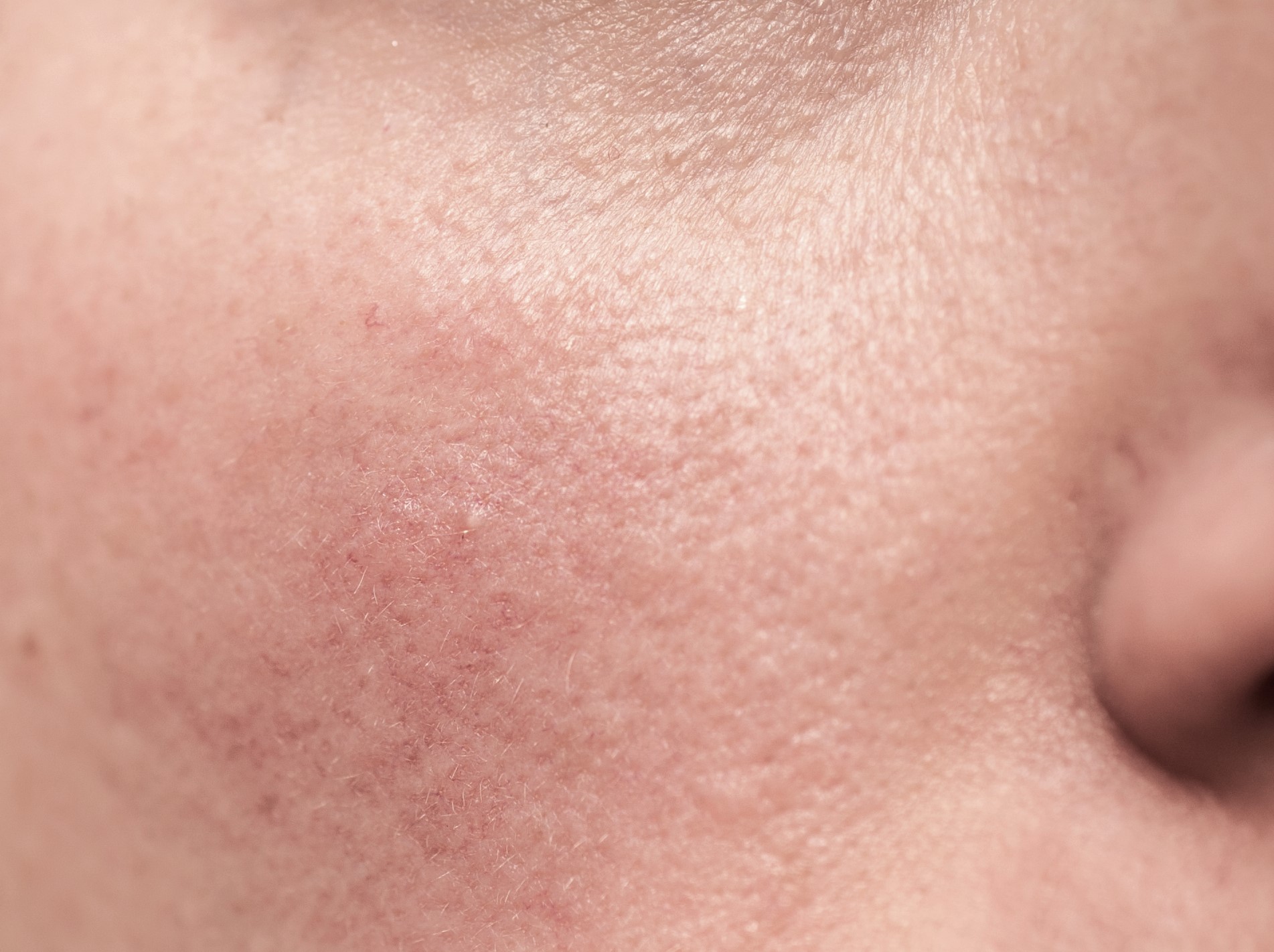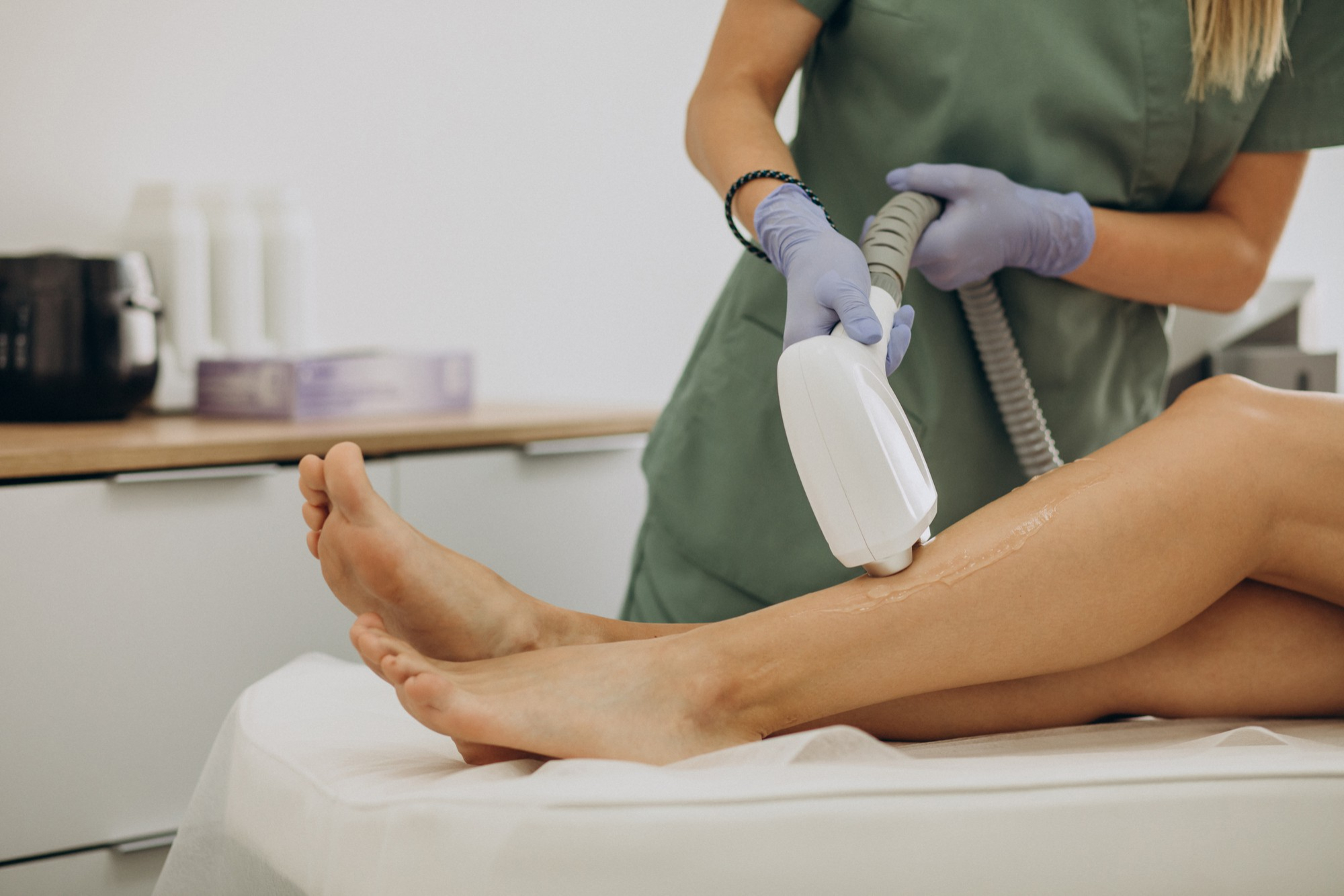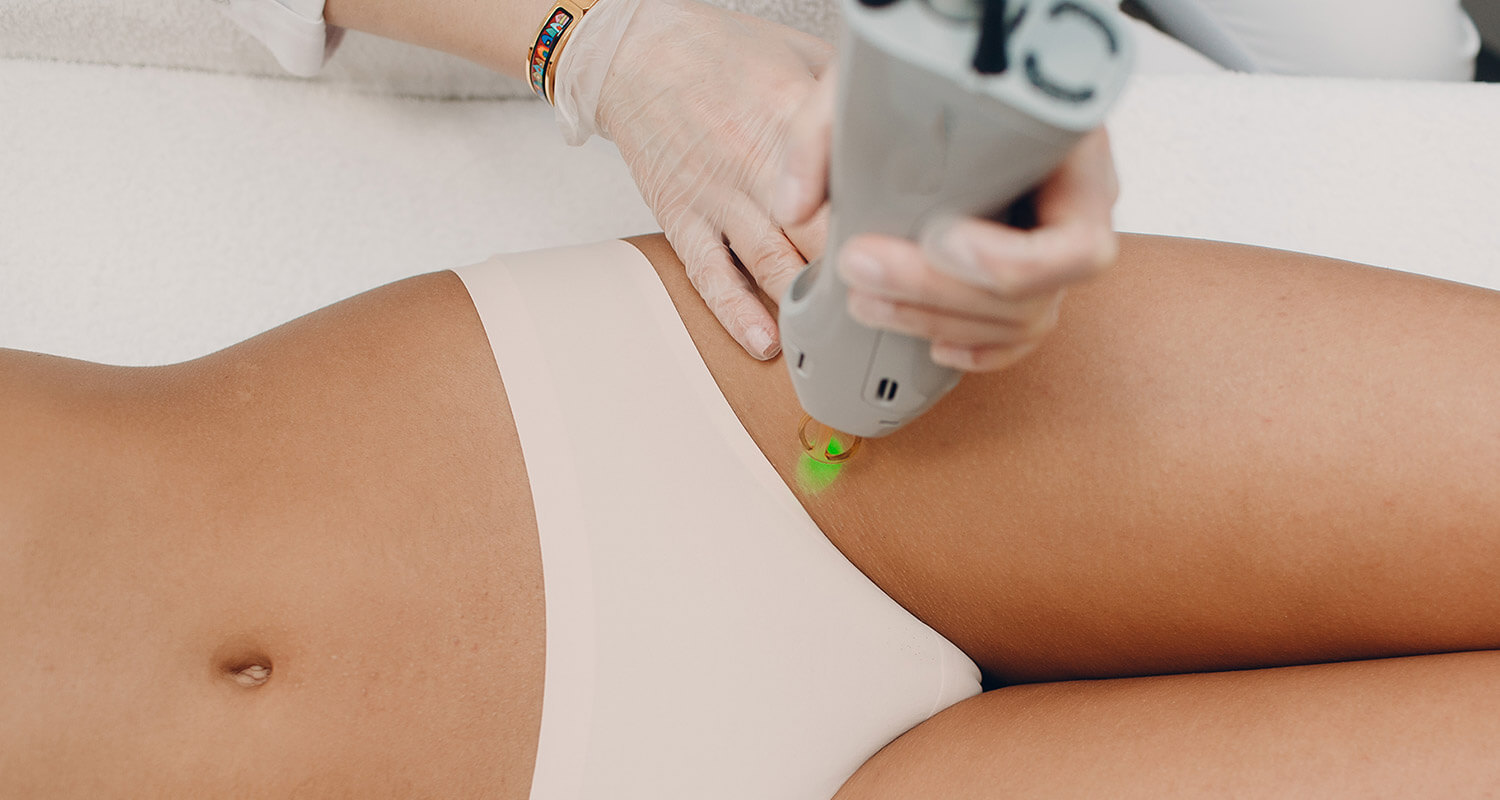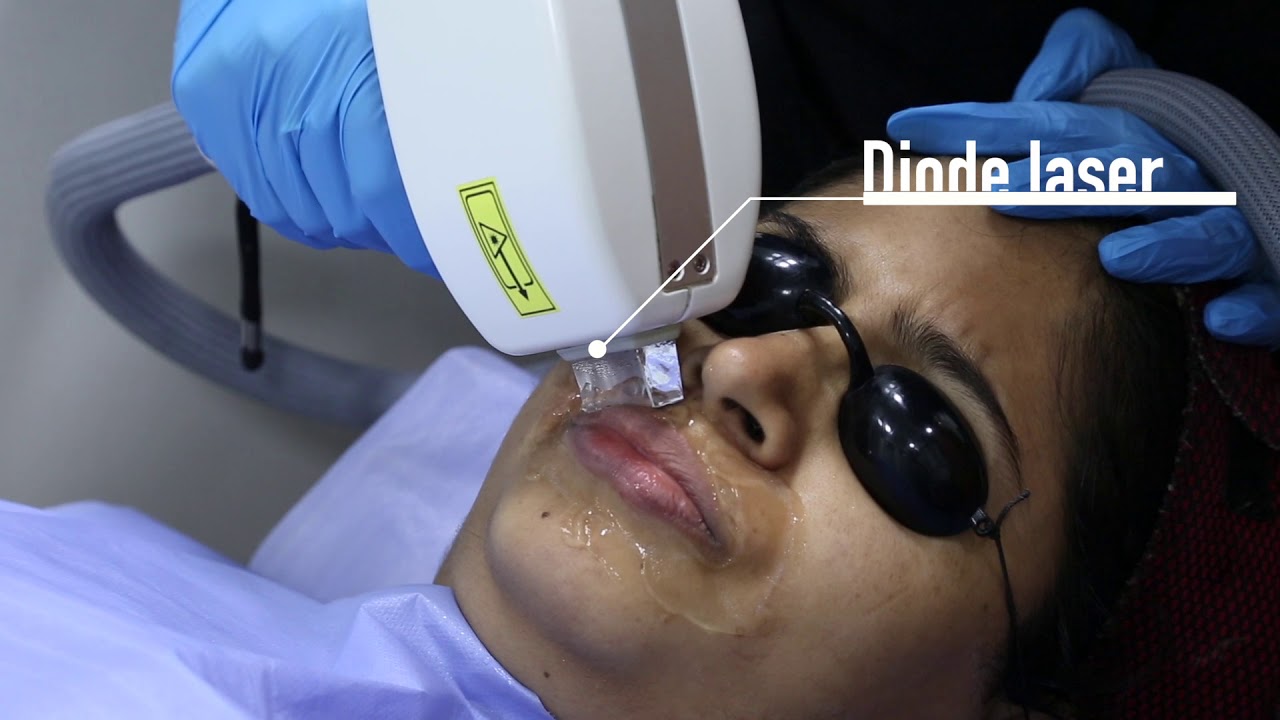

FAQs
What Are Side Effects Of Laser Hair Removal
Modified: September 23, 2023
Discover the general questions surrounding laser hair removal, including potential side effects. Educate yourself before choosing this hair removal method.
(Many of the links in this article redirect to a specific reviewed product. Your purchase of these products through affiliate links helps to generate commission for Under-tec.com, at no extra cost. Learn more)
Table of Contents
Introduction
Laser hair removal is a popular cosmetic procedure that offers a long-lasting solution to unwanted body hair. It utilizes concentrated beams of light to target and destroy hair follicles, inhibiting future hair growth. This non-invasive treatment is carried out by trained professionals and has gained significant popularity due to its effectiveness and convenience.
While laser hair removal is generally safe and well-tolerated, it is essential to understand that like any medical procedure, it does come with potential side effects. It is vital to be aware of these side effects before undergoing treatment, as it can help manage expectations and make an informed decision.
In this article, we will discuss the common side effects associated with laser hair removal. We will categorize these side effects into temporary and permanent, and provide helpful safety measures and precautions to minimize their occurrence.
It is worth noting that everyone’s experience with laser hair removal may vary, and the severity and duration of side effects will also depend on individual factors such as skin type, hair color, and treatment area. It is highly recommended to consult with a qualified professional before undergoing laser hair removal treatment to assess suitability and discuss any concerns.
How Does Laser Hair Removal Work?
Laser hair removal works by targeting the melanin pigment in the hair follicles. The high-intensity light emitted by the laser is absorbed by the melanin, which causes damage to the hair follicle, inhibiting hair growth. The laser specifically targets the hair follicles and leaves the surrounding skin tissue unharmed.
The process begins with the skin being cleaned and shaved to ensure that the laser directly contacts the hair follicles. A cooling gel or device may be applied to the skin to protect it and enhance the comfort of the procedure. The technician then uses a handheld laser device that emits pulses of light beams onto the treatment area.
The duration of the treatment depends on the size of the area being treated. Smaller areas like the upper lip or underarms may only take a few minutes, while larger areas like the legs or back may take about an hour. Multiple sessions are usually required to achieve the desired results as hair grows in cycles, and not all hairs are actively growing at the same time.
It is important to note that laser hair removal is most effective on individuals with fair to medium skin tones and dark hair. The contrast between the skin and hair color allows the laser to more efficiently target the melanin in the hair follicles. People with lighter hair colors such as blonde or gray may not experience the same level of effectiveness.
The effectiveness of laser hair removal may also vary depending on hormonal factors. Hormonal changes, such as those that occur during pregnancy or menopause, can impact hair growth patterns. In some cases, hormonal imbalances may lead to new hair growth or require maintenance sessions after the initial treatment.
Overall, laser hair removal is a safe and highly effective method for long-term hair reduction. While it cannot guarantee permanent hair removal, it can significantly reduce the amount of hair in the treated areas. Regular maintenance sessions are often recommended to maintain the desired results.
Common Side Effects
While laser hair removal is generally considered safe, there are common side effects that individuals may experience during or after the treatment. It is important to be aware of these potential side effects to ensure a safe and comfortable experience.
1. Redness and Irritation: It is common to experience temporary redness and irritation in the treated area immediately after the treatment. This is typically mild and subsides within a few hours.
2. Swelling: Some individuals may notice slight swelling or puffiness in the treated area. This is a normal reaction and should resolve within a day or two.
3. Sensitivity: The treated area may become sensitive to touch or feel slightly sunburned. Applying a cool compress or aloe vera gel can help alleviate discomfort.
4. Changes in Skin Color: In rare cases, laser hair removal may cause temporary changes in skin pigmentation. This can manifest as either darkening or lightening of the skin in the treated area. These changes are usually temporary and fade over time.
5. Itching: Itchiness may occur as the hair starts to shed in the treated area. It is important to avoid scratching to minimize the risk of infection or skin damage.
6. Blisters or Crusts: While uncommon, some individuals may experience small blisters or crusts in the treated area. These usually heal on their own within a few days, and it is important to avoid picking or popping them to prevent infection.
It is essential to note that these side effects are typically temporary in nature and tend to resolve on their own within a few days or weeks. However, if you experience severe or prolonged side effects, it is advisable to consult with your healthcare provider or the professional who performed the laser hair removal treatment.
It is important to follow all post-treatment instructions provided by the technician, including avoiding sun exposure, excessive heat, and certain skincare products that can irritate the treated area. Additionally, applying sunscreen with a high SPF and avoiding sun exposure for a few weeks after the treatment can help minimize the risk of complications and undesirable side effects.
Overall, being aware of these common side effects can help individuals prepare for their laser hair removal treatment and manage any discomfort that may arise. With proper care and attention, the majority of individuals can enjoy the benefits of hair-free skin without significant side effects.
Temporary Side Effects
Temporary side effects are common after laser hair removal treatment and typically subside on their own within a few hours to a few days. It is crucial to understand and manage these temporary side effects to ensure a comfortable and successful treatment experience.
1. Redness and Irritation: One of the most common temporary side effects of laser hair removal is redness and irritation in the treated area. This is a normal reaction to the laser energy and typically resolves within a few hours. Applying a cool compress or a soothing gel can help alleviate discomfort and reduce redness.
2. Swelling: Some individuals may experience temporary swelling or puffiness in the treated area. This is a normal response to the laser treatment and should subside within a day or two. Elevating the treated area and avoiding any activities that may increase blood flow, such as exercise or hot showers, can help minimize swelling.
3. Sensitivity: The treated area may feel sensitive to touch or appear slightly sunburned. This sensitivity is temporary and usually subsides within a day. Avoiding any harsh or abrasive skincare products and using a gentle moisturizer can help soothe the skin.
4. Itching: As the hair starts to shed in the treated area, some individuals may experience temporary itching. It is important to resist the urge to scratch, as it can lead to skin damage or infection. Applying a hydrating lotion or using a cold compress can alleviate itching.
5. Dryness and Peeling: Laser hair removal can temporarily disrupt the skin’s natural moisture barrier, resulting in dryness and peeling of the treated area. Using a fragrance-free, hypoallergenic moisturizer can help restore the skin’s moisture balance and prevent excessive peeling.
6. Change in Pigmentation: Temporary changes in skin pigmentation, such as darkening or lightening of the treated area, can occur after laser hair removal. These changes are usually temporary and fade over time as the skin heals. It is important to protect the treated area from sun exposure and apply sunscreen to minimize the risk of pigmentation changes.
It is essential to note that these temporary side effects are considered normal and should not cause significant concern. However, if any of these side effects persist or worsen over time or if you experience severe pain or blistering, it is important to consult with your healthcare provider or the professional who performed the laser hair removal treatment.
By following post-treatment care instructions, such as avoiding sun exposure, using gentle skincare products, and keeping the treated area clean and moisturized, individuals can help minimize and manage these temporary side effects. With proper care and attention, individuals can expect these side effects to fade away, leaving behind smooth, hair-free skin.
Permanent Side Effects
In rare cases, laser hair removal may cause permanent side effects. While the occurrence of these side effects is uncommon, it is important to be aware of them and discuss any concerns with a qualified professional before undergoing treatment.
1. Scarring: Although rare, laser hair removal can potentially cause scarring, especially if the treatment is performed on sensitive areas or if the skin is not properly cared for during the healing process. People with a history of keloid scarring or poor wound healing may be at a higher risk for scarring.
2. Hyperpigmentation: Hyperpigmentation is a condition in which the treated area becomes darker than the surrounding skin. This can occur due to an overproduction of melanin in response to the laser treatment. People with darker skin tones are more prone to this side effect.
3. Hypopigmentation: Hypopigmentation is the opposite of hyperpigmentation, where the treated area becomes lighter than the surrounding skin. It occurs when the melanin-producing cells in the treated area are damaged. Like hyperpigmentation, people with darker skin types have a higher risk of experiencing this side effect.
4. Burns and Blisters: If the laser intensity is set too high or if the treatment is not performed correctly, it can cause burns on the skin’s surface. These burns can range from mild to severe and may result in blistering or crusting. It is important for the technician to carefully assess and adjust the laser settings based on the individual’s skin type and hair color.
5. Infection: Although rare, there is a small risk of infection following laser hair removal. This can occur if proper hygiene practices are not followed during and after the treatment. It is important to keep the treated area clean, avoid touching it with dirty hands, and follow any post-treatment care instructions provided by the professional.
It is important to remember that the majority of individuals who undergo laser hair removal do not experience any of these permanent side effects. The occurrence of these side effects is relatively low when performed by a skilled and experienced professional who takes precautions and follows proper protocols.
If you develop any of these permanent side effects or are concerned about potential complications, it is crucial to seek immediate medical attention or follow up with the professional who performed the treatment. They can assess the situation and recommend appropriate treatment options to manage any lingering side effects.
Understanding the potential risks and being proactive in communication with the professional can help ensure a safe and successful laser hair removal experience.
Safety Measures and Precautions
While laser hair removal is generally a safe procedure, it is crucial to take certain safety measures and precautions to minimize the risk of complications and ensure the best possible outcome. Here are some important considerations to keep in mind:
1. Choose a Qualified Professional: It is essential to have laser hair removal performed by a qualified and experienced professional. Ensure that the individual administering the treatment is licensed, certified, and knowledgeable about the procedure. Research the provider, read reviews, and ask for recommendations before making a decision.
2. Consultation and Skin Assessment: Before undergoing laser hair removal, schedule a consultation with the professional. They will assess your skin type, hair color, and medical history to determine the suitability of the treatment. Transparent communication about any underlying health conditions or medications you are taking is crucial to ensure the safety and effectiveness of the procedure.
3. Protect Your Eyes: To safeguard your eyes from the laser light, both you and the technician should wear appropriate eye protection during the treatment. Laser goggles or eye shields specifically designed for laser procedures provide the necessary protection against potential eye damage.
4. Avoid Sun Exposure: Sun exposure increases the risk of side effects from laser hair removal. It is crucial to avoid tanning and prolonged sun exposure before and after the treatment. Sunburned or tanned skin can make the procedure less effective and increase the risk of complications such as pigmentation changes or burns.
5. Inform the Technician: It is important to inform the technician about any recent changes or treatments on the treated area, such as waxing, plucking, or chemical peels. Hair removal methods that disrupt the hair follicles can interfere with the effectiveness of the laser treatment. The technician can provide appropriate guidance on the timing of the treatment based on your previous hair removal activities.
6. Follow Pre- and Post-Treatment Instructions: The professional will provide you with specific pre- and post-treatment instructions to ensure optimal results and minimize potential side effects. Follow these instructions carefully, which may include avoiding certain skincare products, sun exposure, or excessive heat, and adhering to proper post-treatment care, such as moisturizing and using sunscreen.
7. Multiple Sessions and Maintenance: Keep in mind that laser hair removal typically requires multiple sessions to achieve the desired results. Hair grows in cycles, and not all follicles are actively growing at the same time. It is important to commit to the recommended number of sessions and any maintenance treatments to achieve and maintain the desired outcome.
By adhering to these safety measures and precautions, you can help ensure a safe and successful laser hair removal treatment. Open communication with the professional, following their guidance, and taking care of your skin before and after the procedure will contribute to a positive experience and long-term hair reduction.
Conclusion
Laser hair removal is a popular and effective method for long-term hair reduction. While it offers a convenient solution to unwanted body hair, it is essential to understand and consider the potential side effects associated with the procedure.
In this article, we have discussed the common side effects of laser hair removal, including both temporary and permanent effects. Temporary side effects may include redness, swelling, sensitivity, itching, dryness, and changes in skin color, but these are typically mild and subside within a few hours to a few days. On the other hand, permanent side effects such as scarring, hyperpigmentation, hypopigmentation, burns, and infections are rare but possible, and it is important to be aware of these risks.
To ensure a safe and successful laser hair removal treatment, it is crucial to take necessary safety measures and precautions. Choose a qualified professional, undergo a consultation and skin assessment, protect your eyes during the procedure, avoid sun exposure, inform the technician about any recent treatments, and follow pre- and post-treatment instructions diligently. Additionally, committing to multiple sessions and maintenance treatments can help achieve and maintain optimal results.
Remember that individual experiences may vary, and it is always advisable to consult with a qualified professional before undergoing laser hair removal. They can assess your specific needs, discuss any concerns, and provide personalized guidance.
By being well-informed about the potential side effects and taking the necessary precautions, you can make an informed decision about whether laser hair removal is the right choice for you. With proper care, laser hair removal can offer a long-lasting solution for smooth and hair-free skin.








